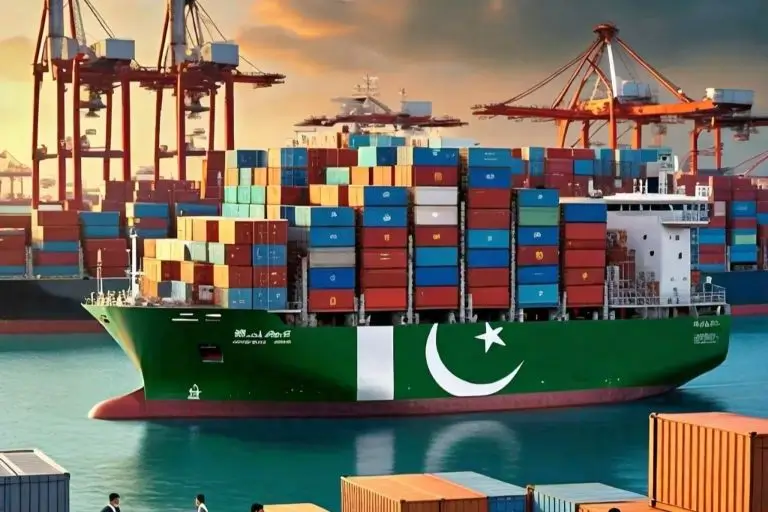The journey of Pakistan’s economy is like a roller coaster ride. After gaining speed, the economy falls dramatically and goes into depression before starting its boom journey again. So, the economy is in a persistent boom and bust cycle which frequently repeats itself. There are certain causes and consequences of the economic meltdown of Pakistan which can be addressed below.
In this regard, the foremost issue is political instability in the country. It is a well-known fact that the devastating condition of an economy is linked to political instability. The bitter attitude of Pakistan’s main political parties, PDM (a political alliance) vs PTI, has created political mayhem in the country that brought it to the verge of economic collapse. Political instability, along with the trust deficit among the main institutions of Pakistan, exacerbated the crisis to the next level.
Moreover, the regressive tax system is another fault line in Pakistan’s economy. Overreliance on the sales tax, where people pay alike irrespective of their incomes, leads to tax evasion, mostly by the elite class, causing a deficit in the balance between revenue and expenditure. Expanding the tax net and implementing strict measures to find and punish tax evasion will boost government revenue, ensuring a balanced or surplus budget. In this sense, the exploration of the underground economy is needed. According to a paper published by PIDE, significant chunks of economic activities are going underground, which are not accounted for. In the case of Pakistan, the underground economy is estimated at about 40% of the GDP, which is enough to raise the living standards of the people. However, a little effort by the economy’s watchdogs can bring the undocumented economy into the documents, helping boost tax revenue.
Political instability and a regressive tax system are the main causes of Pakistan’s economic meltdown.
Another source of revenue generation for any government is exports, but Pakistan’s export structure is limited to a few markets and goods. There is a huge potential for Pakistani goods in external markets, but the lack of knowledge on the government’s part, poor quality goods on the production side, and excessive regulations make exporting goods challenging, limiting exports to a few goods like textiles and cotton. Pakistan is also limited on product and market diversification since its products’ export relies heavily on a few external markets such as the USA and China despite better options on the external front. To seize more markets, the previous PTI government launched a much-appreciated policy “look-africa-policy” to seek markets for Pakistan’s products in African countries. So, diversification of products and markets is necessary to curb the trade deficit and earn foreign exchange.
As a consequence of these problems, Pakistan is experiencing a multidimensional economic crisis ranging from inflation to a balance of payment problem. Poverty, unemployment, and debt crises add more insult to injury. Nowadays, the core problem of Pakistan is inflation, which is on a rising trend. Inflation has increased up to 35.4 percent and is expected to increase further due to a surge in petroleum prices announced by the government on 2nd April. To address inflation, the state bank has increased the policy rate up to 21 percent, but it has failed to control inflation in the country. However, rising interest rates have severe repercussions as they cause a reduction in consumer spending and increase borrowing costs, affecting business investment.
To control inflation, the authorities must focus on fiscal management and ensure more foreign exchange enters the country’s coffers through remittances, which can be increased by boosting the diaspora’s confidence in Pakistan’s economy and its leaders. The IMF’s impending tranche is also needed to boost the confidence level of businessmen in the economy.
To control inflation, the authorities must focus on fiscal management and ensure more foreign exchange enters the country’s coffers through remittances.
Similarly, Pakistan is also confronting a balance of payment (BOP) problem. The current account deficit is responsible for the overall BOP deficit. However, the ban on unnecessary imports by Shahbaz Sharif’s government failed to avert the current account deficit. The higher magnitude of imports and lower value of exports puts the import budget higher than that of exports. Pakistan has relied heavily on external borrowing – multilateral and bilateral sources – to solve the BOP problem. In the current situation, the only light at the end of the tunnel is the IMF’s impending tranche.
However, the harsh conditionality from the IMF team is really putting Pakistan in trouble. Although Moody’s economists have said that the IMF package is not enough to restore the economy, it is a precedent for other lenders to extend their helping hands in the form of loans to Pakistan. Therefore, Pakistan should show rigor in meeting the conditionality of the IMF to make sure of the already delayed IMF tranche.
Though some core problems, such as poverty, unemployment, and debt crisis, are not addressed in this article due to word constraints, they will be discussed next. In conclusion, it is certain that the solution to these problems, whether political, economic, or institutional, requires trust building, cooperation, and political vigor among political leaders and institutions. Quaid e Azam Muhammad Ali Jinnah, in his speech to the new constituent assembly of Pakistan on August 11, 1947, pointed out that “if we want to make this great state of Pakistan happy and prosperous, we should wholly and solely concentrate on the well-being of the people, and especially of the masses and the poor. If you work on cooperation, forgetting the past, and burying the hatchet, you are bound to succeed…”










